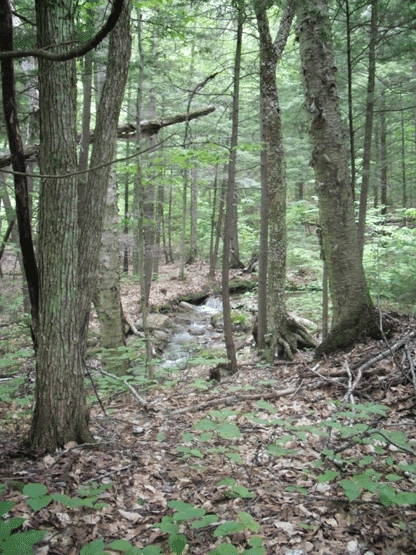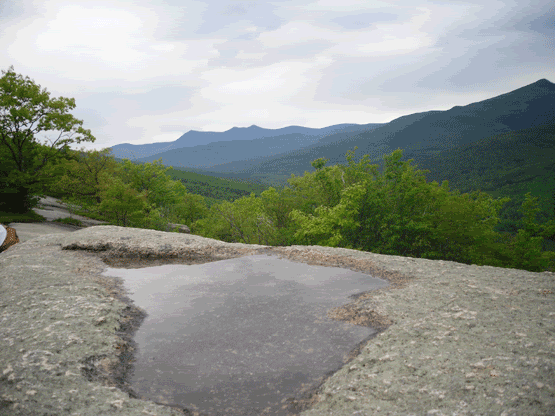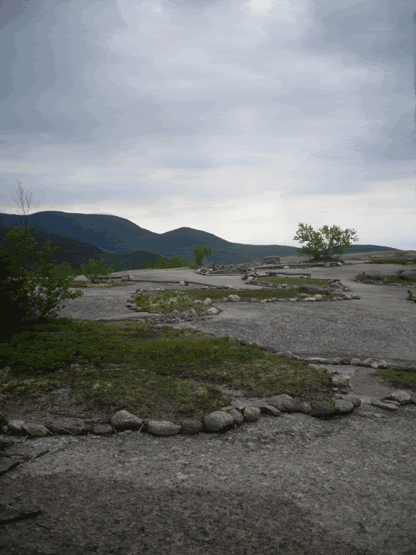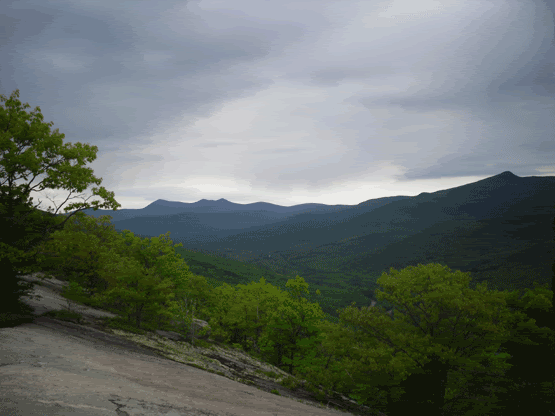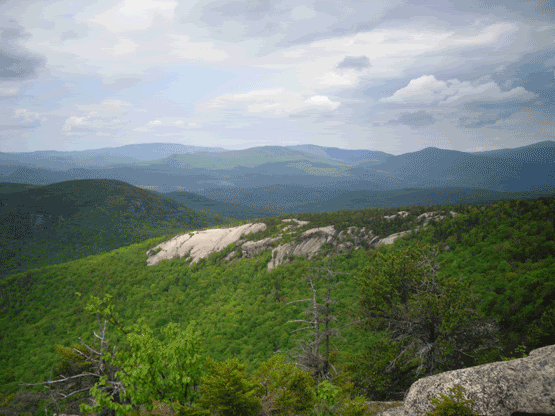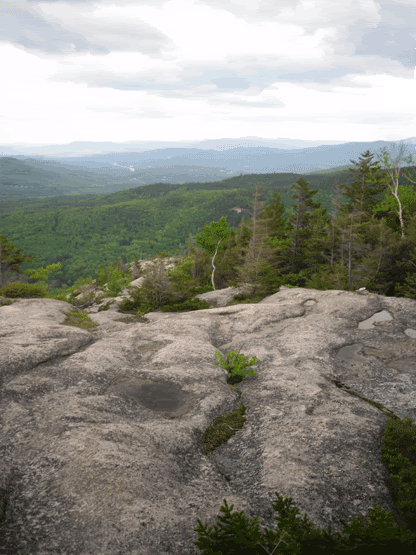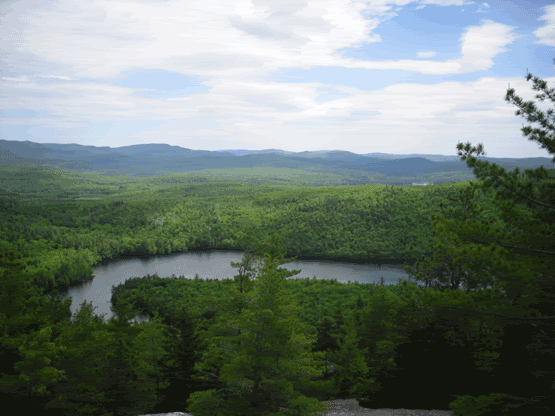
The White Mountain National Forest is not just in New Hampshire, but also extends into the neighbouring state of Maine. I am a rock collector as well as a hiker, and in my searches for new places to go digging, I came across two locations, Deer Hill and Lord Hill.
The combination of the area's unique geology and its prehistoric history during the previous ice ages have created a heaven for the rock hound. Volcanic activity combining with hydrothermal activity created semi-precious stones: beryl, tourmaline, topaz, smoky quartz, garnet. Then glaciers steamrolled the mountains down, exposing the semiprecious stones and their surrounding pegmatite matrix. The National Forest Service has struck a decent balance between trying to preserve the natural beauty of the Park while also allowing for hobby rock collectors to have the opportunity to go out and make their own finds. Lord Hill is one of these locations, but in addition to is mineral allure is its astounding beauty and solitude.
The trail to Lord Hill is located on Deer Hill Road (and yes, Deer Hill, known for its abundant Smoky Quartz is nearby) on the Horseshoe Pond Trail. The pull-off is a small area on a turn about four miles from the start of the road. The trail descends from the road, a faint path, until it arrives on a dirt road. Turn right and follow this for about a third of a mile (there appears to be a fork in the road that bends to the the left, but continue straight until the dirt road you are on starts to peter out. Here, the trail bends to the right and enters a medow area. The trail continues back into the woods, and begins a sharp ascent into a mixed forest of mostly paper birch and hemlock. The trail crosses several small brooks in about three places, but remains dry in most weather. A junction is eventually reached, and here you want top bear left. You are almost at the summit of Lord Hill at this point. When you reach a fairly sizable and steep boulder, you are almost there, and this is the only tricky part of the hike.
Once you reach the summit, you have two options. For a spectacular view of Horseshoe Pond, take the faint trail to the left where you will find several ledges. Have a rest from your climb (though not overly difficult, it is substantial), have a seat, eat a snack and take it all in. Or, if you are there for some prospecting, from the summit follow the trail straight ahead. It re-enters the woods for a short bit and then the trail drops into an open area. Here is the first of the pits that you can dig in.
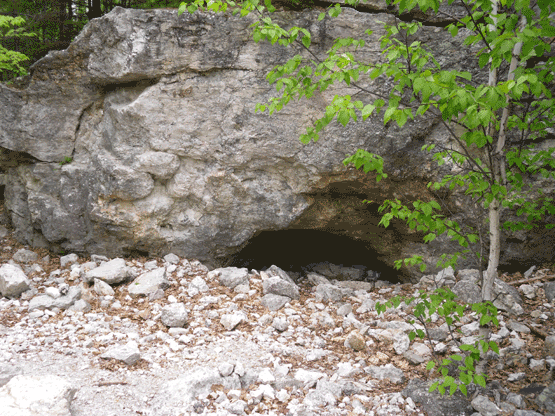
I have been prospecting here once. There is a large amount of white quartz here which can be hell on the wrists. A cold chisel is hiiiighly recommended here. The only thing I found in my brief prospect here were a few garnets, but according to some images at mindat.org, there have been some nice specimens of topaz that have been found (the clear species). There are allegedly two more pits that people have dug in, but I have not yet found them in my brief explorations of the area.

The trail that takes you to the first pit is actually a loop, it descends down the mountain and then enters a primarily birch and beech forest. I haven't been all the way around this trail yet, but it does return back up the mountain. I have been down the return end of the trail (it is over by the overlook to Horseshoe Pond). It was during that trip, I found my first white mutations of the Pink Ladies Slipper orchid.
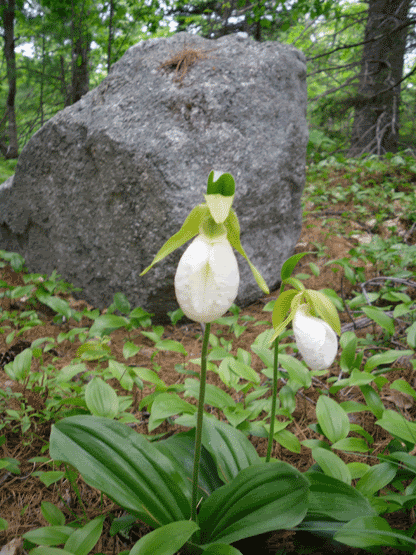
Lord Hill is located in Stoneham, Maine. Take Rt 16 North to Conway, New Hampshire. In Conway, pick up Rt 113 into Fryeburg, Maine. This is where Rt 113 becomes a North/South Road. Make a left onto 113 North and follow this to Deer Hill Rd (about in about 15 to twenty miles). Deer Hill Rd takes you into the Maine section of the White Mountain National Forest. In 4.2 miles you will see the trailhead for Horseshoe Pond Trail at a small pull over. The trail follows the hill, past a gravestone on the right, and exits onto a gravel road. Turn right. There will be a fork in the road, straight and left. Continue straight and when the road starts to peter out and there will be a grassy path on the right. The trail continues through here back into the woods and starts a steady ascent through mixed forest. Eventually you will come to an intersection. Turn left and follow this to the summit of Lord Hill.
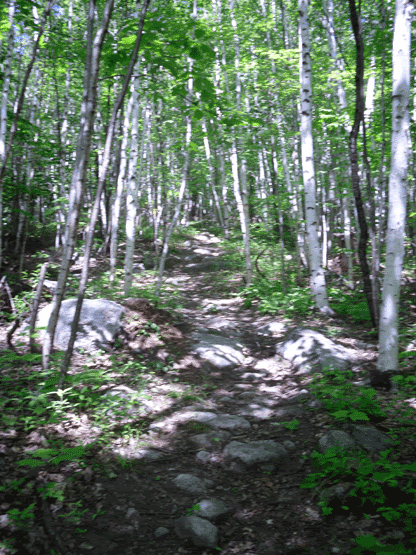
For information regarding the rules and regulations about rock collecting at the Lord Hill site, visit their Mineral Collecting section. There is an informative .PDF file.


